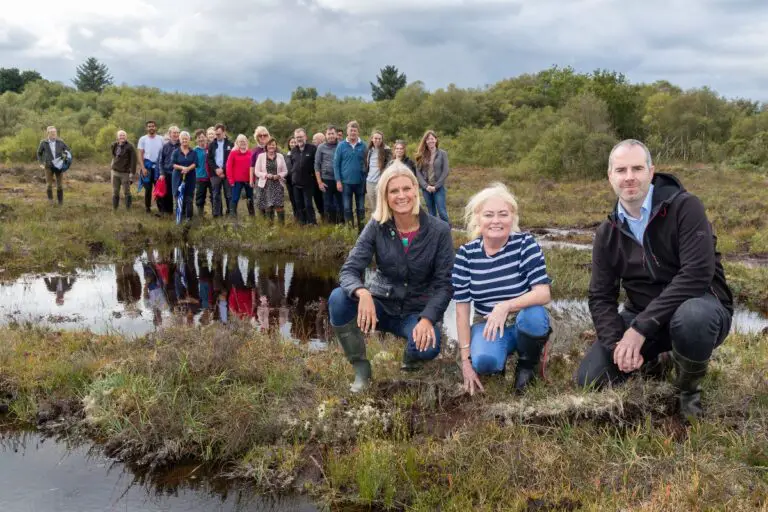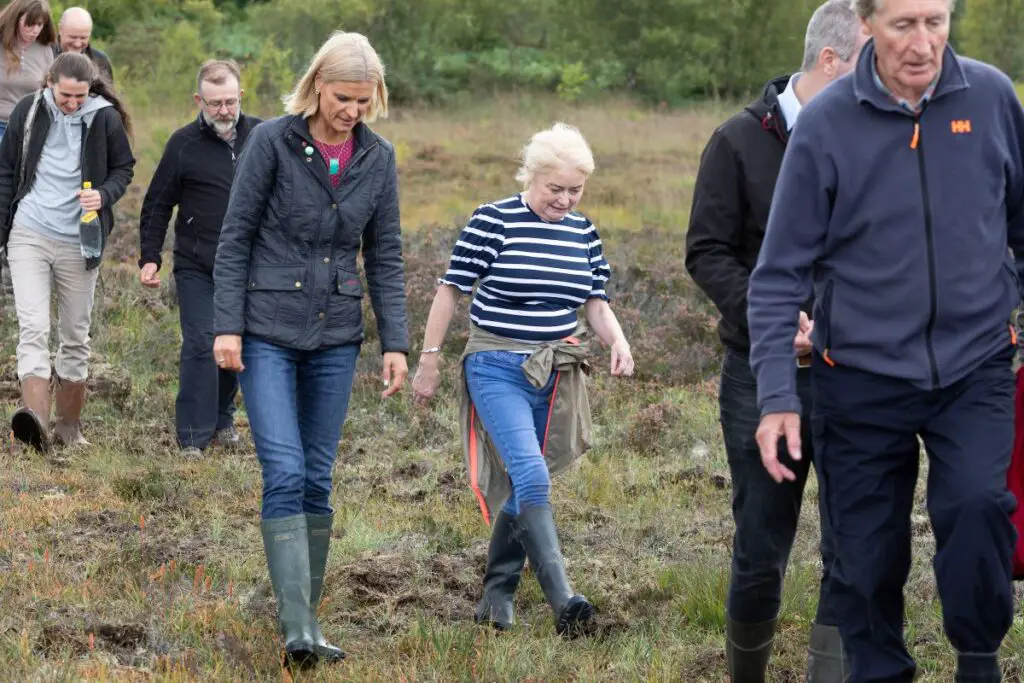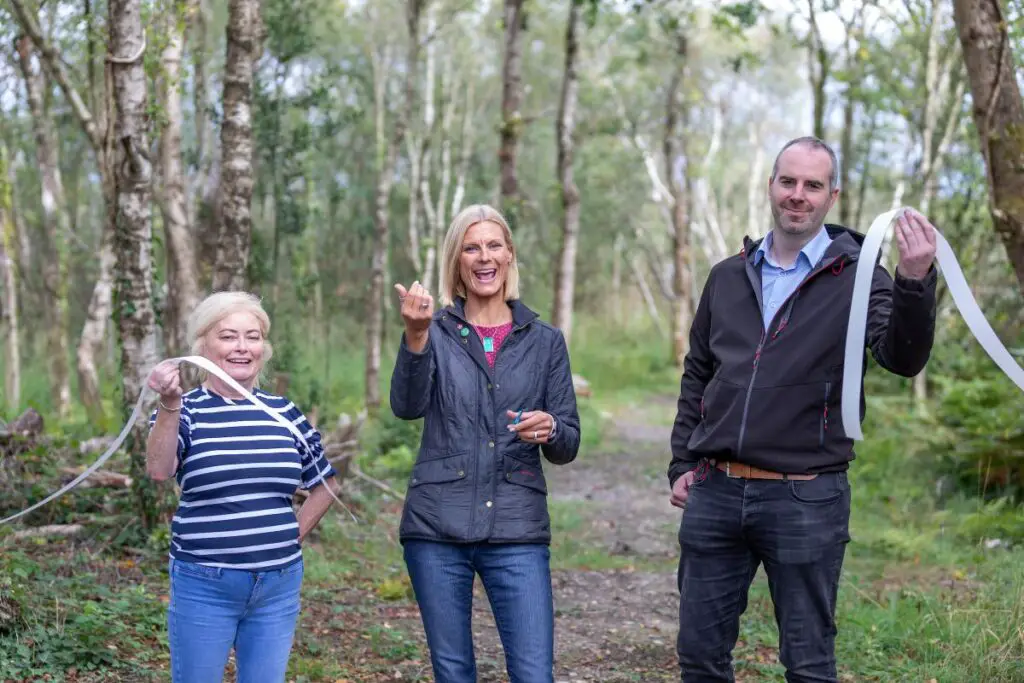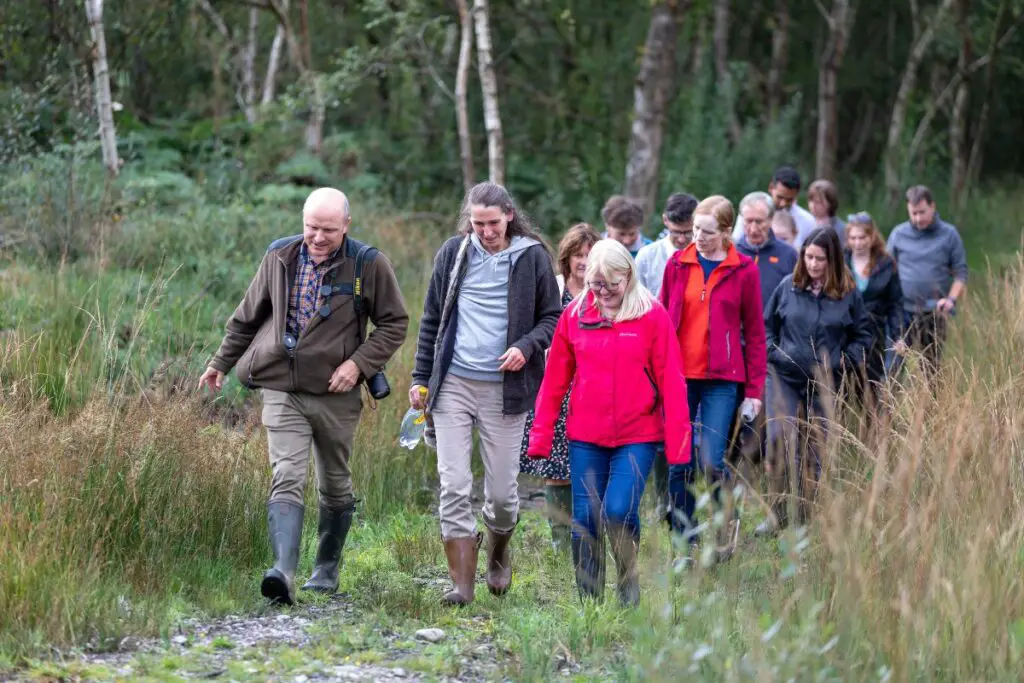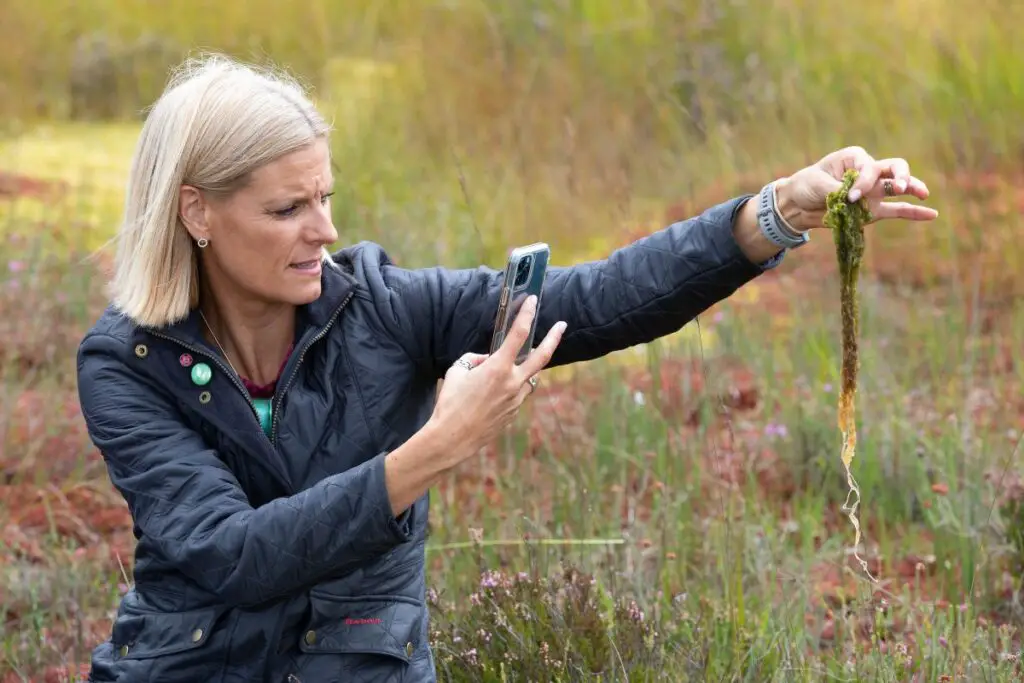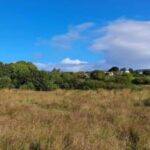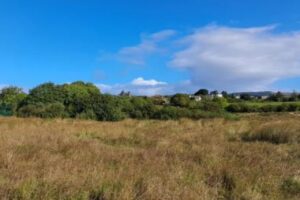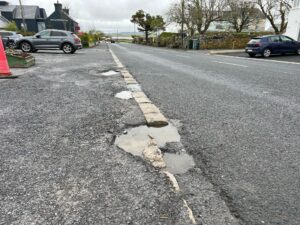*Catherine Ni Ciardha Land owner, Minister for state for Land Use and Biodiversity Pippa Hackett and Ecologist and Project Lead Barry O’Loughlin at the Shanakyle Bog Restoration and Habitat Enhancement Project EIP Launch Day. Photograph: Natasha Barton
THE completed Shanakyle Bog restoration and habitat enhancement project was launched earlier this month in a celebration of what is a first of its kind environmental initiative in Co. Clare.
Shanakyle, Parteen is the first raised bog to be rewetted in the county, a process of blocking drains to restore cut and degraded bogs to their previous condition.
Bog rewetting and rewilding creates favourable conditions for native biodiversity, enabling the growth sphagnum mosses, a renowned carbon sink, making this project a major step forward into a greener future for Clare.
Barry O’Loughlin, the ecologist who headed up the bog restoration, told The Clare Echo about the significance of the project. “Bogs store twice as much carbon as the world’s tropical rainforests. An EPA funded research study was carried out on Moyarwood Bog, a raised bog in Galway, and over a five-year period they discovered there was. 78 tonnes of carbon per hectare per year being absorbed on a rewetted section. Then they looked at a drained section for comparison and they found that it was emitting 1.57 tonnes per hectare per year”.
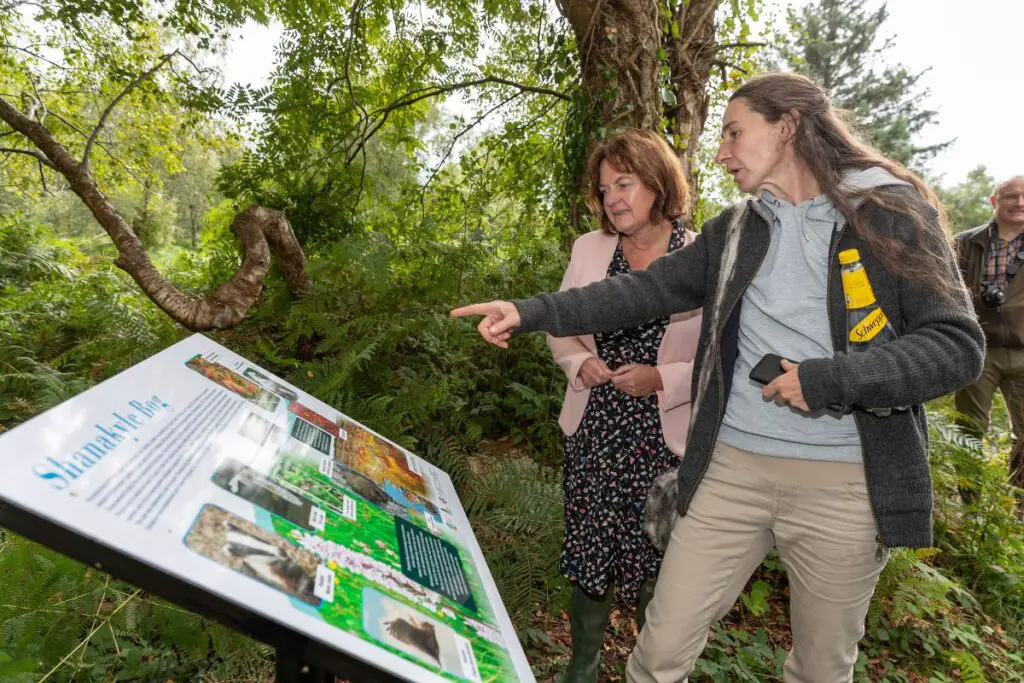
The Inagh man said, “The Shanakyle Bog restoration all started when landowner Catherine Ní Ciardha contacted me to manage her land for biodiversity. I had carried out my masters project on Shanakyle bog in 2010, that’s how I knew Catherine, and since then I had worked with Bord na Móna on large scale rewetting and rehabilitation programs. So, I just said [to Catherine] ‘why don’t we restore the bog?’ which she was on for and then we ended up diversifying the project to include the creation of a wildlife pond, managing 10 acres of grassland for a wildflower meadow, and installing 30 bird nest boxes for rare and endangered species”.
The restoration of the 30 acre bog was completed on funding of €3 million allocated by Minister of State for Land Use and Biodiversity, Pippa Hackett (GP) who attended the launch.
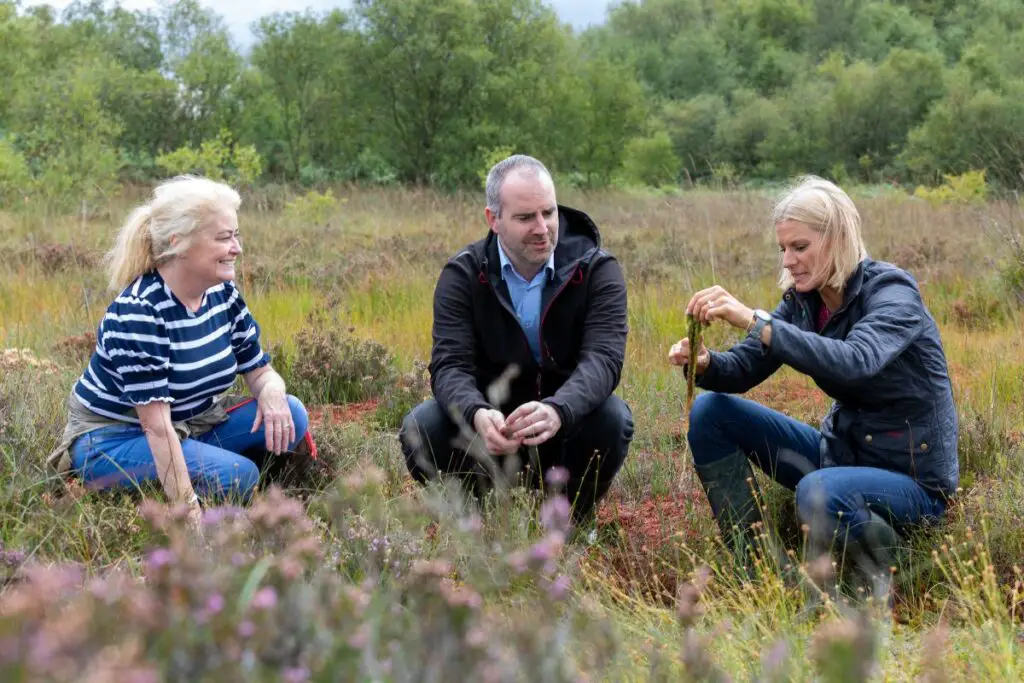
The restoration was a major success, Shanakyle bog has passed 50% sphagnum moss cover which means it is now considered ‘an active raised bog’. Active raised bogs constitute less than 1% of Ireland’s total land cover and are categorized as a rare annex 1 habitat under the EU habitats directive despite their environmental importance.
Barry says he’s already seen a big improvement in the biodiversity of the bog, “we carried out the work from October to December in 2021 and already we’re seeing sphagnum growing. Then of course we’re getting a lot of birds of prey coming to the bog and we’re getting mallards as well so it’s becoming a biodiversity hotspot”.
Bog restoration is becoming popular nationwide, and Barry thinks the work at Shanakyle could inspire others, “a community in Offaly contacted us and came down and now they want to do something after seeing what we’ve done so it does have a knock-on effect on other groups. There’s a group in Galway which have got funding and they’ve come down to Shanakyle as well, there’s just a huge interest in wetlands and what people can do on their own land. They see how it’s done, and it encourages them to do something similar”.

